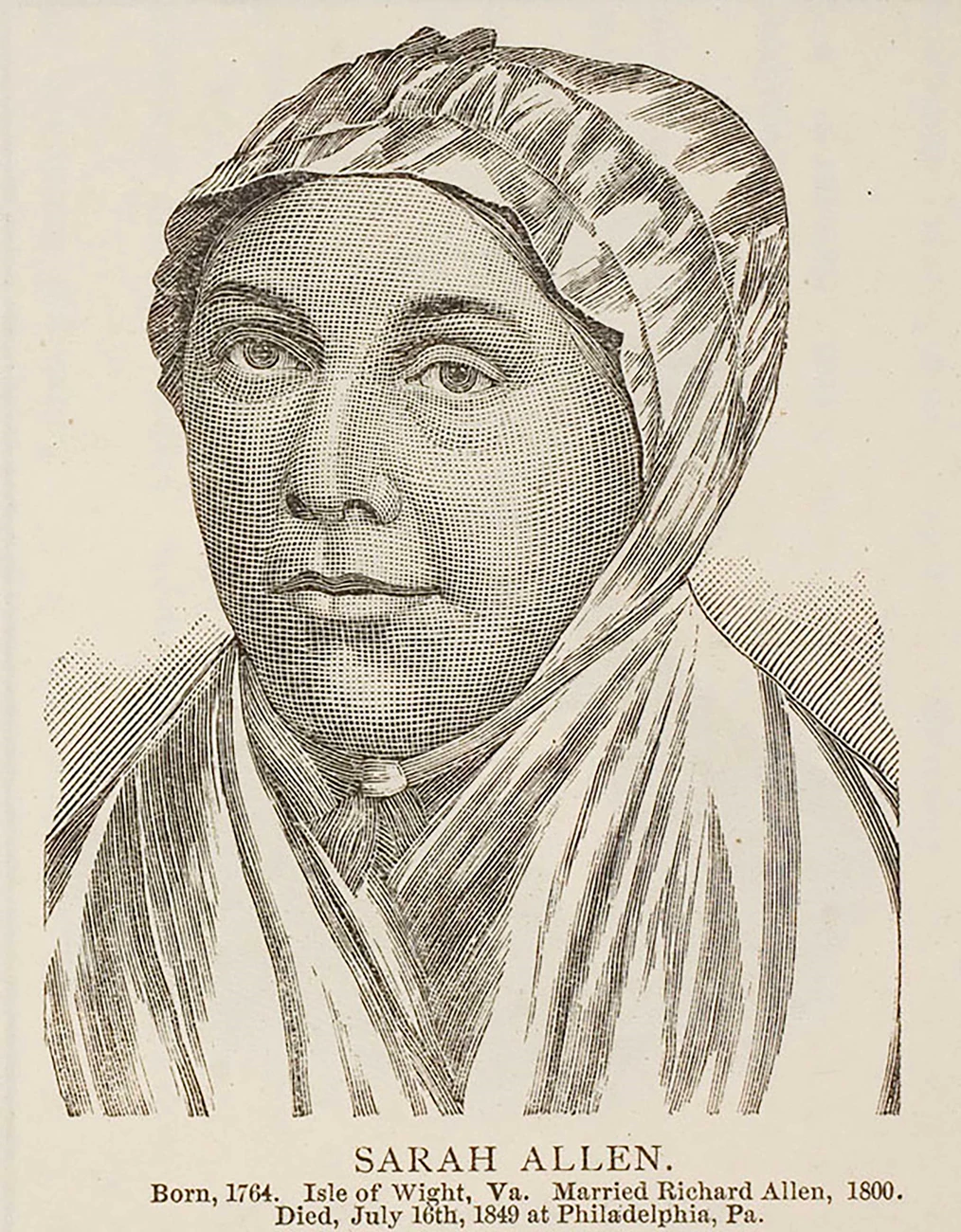Last updated: May 7, 2025
Article
Portrait of Sarah Allen - 1849

Courtesy of the Internet Archive.
Title: Portrait of Sarah Allen - 1849
Date: 1849
Location: Philadelphia, Pennysylvania
Object Information: Illustration in printed book
Repository: Internet Archive, Proceedings of the Quarto-Centennial Conference of the African M.E. Church of South Carolina, at Charleston, SC, May 15, 16, and 17, 1889, editor Bishop Benjamin W. Arnett, D.D. (Charleston, 1890), 8.
Description:
This portrait illustration of Sarah [Bass] Allen was created before her death in 1849. A famed nurse during the 1793 yellow fever epidemic, she also founded a women’s sewing society to support ministers, and was wife to Bishop Richard Allen, founder of Bethel AME Church. An abolitionist and mother of six, Sarah managed the family’s properties in Philadelphia, where their home at Lawrence Court served as a refuge for freedom seekers on the Underground Railroad. According to Bishop Daniel Payne, “Her house was the resort of the brethren who labored in the ministry.” She was entombed alongside her husband at Mother Bethel AME Church.
Note: For quote see Ethel H. Russaw, Call the Roll: Laity in the African Methodist Episcopal Church (Bloomington: Author House, 2011), 12.
Date: 1849
Location: Philadelphia, Pennysylvania
Object Information: Illustration in printed book
Repository: Internet Archive, Proceedings of the Quarto-Centennial Conference of the African M.E. Church of South Carolina, at Charleston, SC, May 15, 16, and 17, 1889, editor Bishop Benjamin W. Arnett, D.D. (Charleston, 1890), 8.
Description:
This portrait illustration of Sarah [Bass] Allen was created before her death in 1849. A famed nurse during the 1793 yellow fever epidemic, she also founded a women’s sewing society to support ministers, and was wife to Bishop Richard Allen, founder of Bethel AME Church. An abolitionist and mother of six, Sarah managed the family’s properties in Philadelphia, where their home at Lawrence Court served as a refuge for freedom seekers on the Underground Railroad. According to Bishop Daniel Payne, “Her house was the resort of the brethren who labored in the ministry.” She was entombed alongside her husband at Mother Bethel AME Church.
Note: For quote see Ethel H. Russaw, Call the Roll: Laity in the African Methodist Episcopal Church (Bloomington: Author House, 2011), 12.
